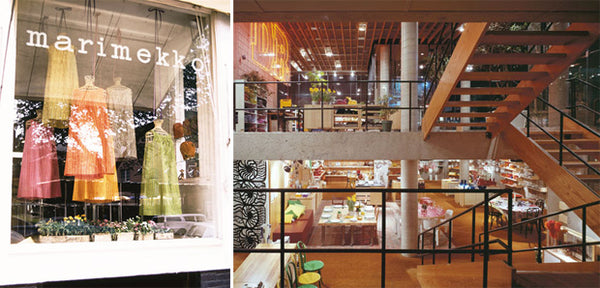Boston, Rapson-Inc. and the Growth of Mass Modern

[photo credit: coolhunting.com]
Boston isn't perceived as a hub of Modernism in the way that Palm Springs is, but in reality, the city and its modern retailers played a huge role in the development of Mass Modernism.
Ralph Rapson's drawings usually featured interiors with wildly modern furniture for the time. However, in the earlier part of his career, this furniture was often a sketch of his imagination; the real selection of Modern designs very was limited for Americans in the first years after WWII.

It was not that modern design had not fully ventured into furniture, but that the gap between high design and the American consumer market had not yet been breached. In 1940, The Museum of Modern Art in New York held a competition entitled, Organic Design in Home Furnishings, for which many of the most iconic mid-century furniture designs were submitted from international architects and designers. In the decade that followed, as many of these designs reached mass production, Ralph Rapson decided to open a store specifically for this type of merchandise.
Rapson-Inc. opened in 1950 at 282 Dartmouth Street, one block from Copley Square in the Back Bay neighborhood of Boston. The store sat just steps from some of the greats from the previous architectural eras, such as the Trinitiy Church in the Romanesque Revival style employed by H. H. Richardson and the Italian Renaissance styled Boston Public Library by Charles Follen McKim of McKim, Mead, & White.
In the beginning, Ralph's wife, Mary, proposed that their stock rely heavily on goods of his own design and other larger pieces on credit from Knoll Associates, with whom he had been collaborating on a number of projects. The long and narrow space acted as a showroom for modern design. Creatively making use of the limited space, Angelo Tasta's fabrics hung full length from the ceiling and Knoll chairs were suspended from the walls. A mock living room arrangement and Rapson-designed storage cabinets were used to show customers how to incorporate modern design into their lives.

Not far away and not long after Rapson-Inc. closed because Ralph had gone to Europe to design a fleet of thoroughly Modern American embassies abroad, another store opened that would become the most influential design store for modern design. Rapson-Inc. was a store success with early adopters of Modernism in Boston, but another store would be the epicenter for Modern design not only in Boston but (arguably) in the whole of the U.S.
Founded in 1953 by architect Ben Thompson, Design Research (D/R) was a retailer of contemporary furnishings, from furniture to dinnerware to clothing. The first store opened on Brattle Street in Harvard Square. The concept - similar to Rapson-Inc.'s but with a much larger selection - was branded as a "lifestyle store", where patrons could buy nearly anything for their modern lifestyle in a range of prices, from a Joe Columbo chair down to $1 Mexican martini glasses. The store carried designs by the likes of Alvar Aalto, Marcel Breuer, and Charles and Ray Eames, but it favored the European designs, particularily those from Scandinavian.
Design Research held sole rights in America to sell the Finnish Marimekko fabrics and garments from 1959-76. Jacqueline Kennedy was photographed during her husband's campaign and presidency wearing a number of Marrimekko dresses she purchased at D/R, bringing the until-then unknown Finnish designer to the forefront of American Modernism as the perfect model for the emerging independent woman.
A second store was designed and built in1969 by Thompson's architectural firm, Benjamin Thompson & Associates, at 48 Brattle Street. Thouroughly modern, the 24,000 sq ft building was constructed of concrete slabs supported by interior concrete columns, with floor-to-ceiling tempered glass exterior walls. In 2003, the building was awarded the AIA Twenty-Five Year Award for "architecture of enduring significance", and although Design Research closed its doors in 1978, its influence is not forgotten.
Written in part by Jane Thompson - Ben Thompson's widow, founder of I.D Magazine, and an architect and urban planner herself - Design Research: The Store that Brought Modern Living to American Homes documents the whole story of this influential enterprise.

[photo credit: Wikipedia]
Caroline Engel for Rapson-Inc.

0 comments